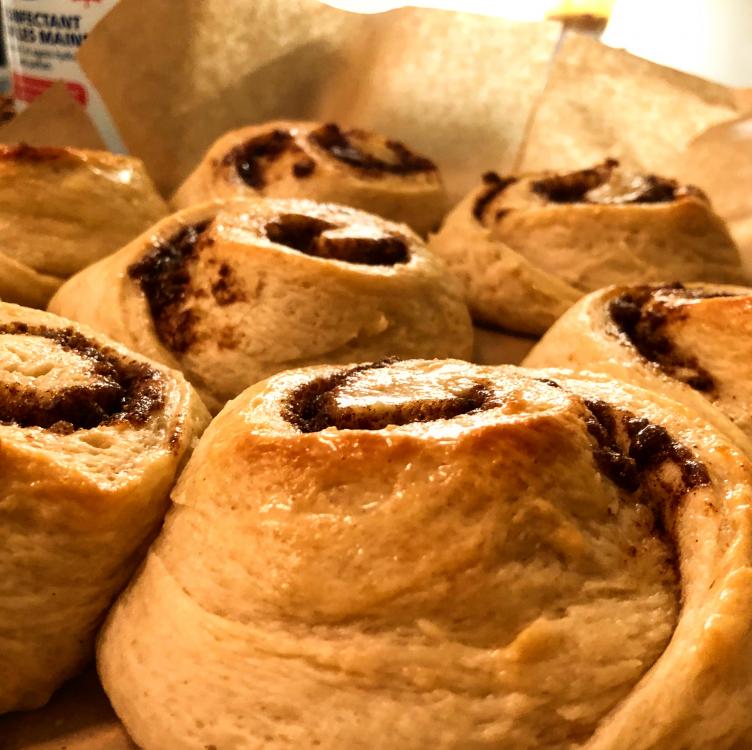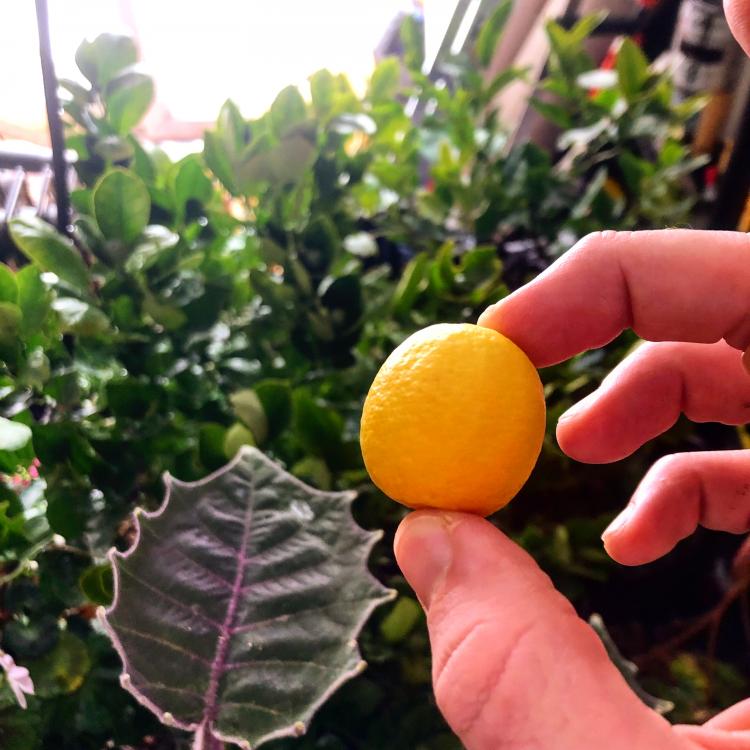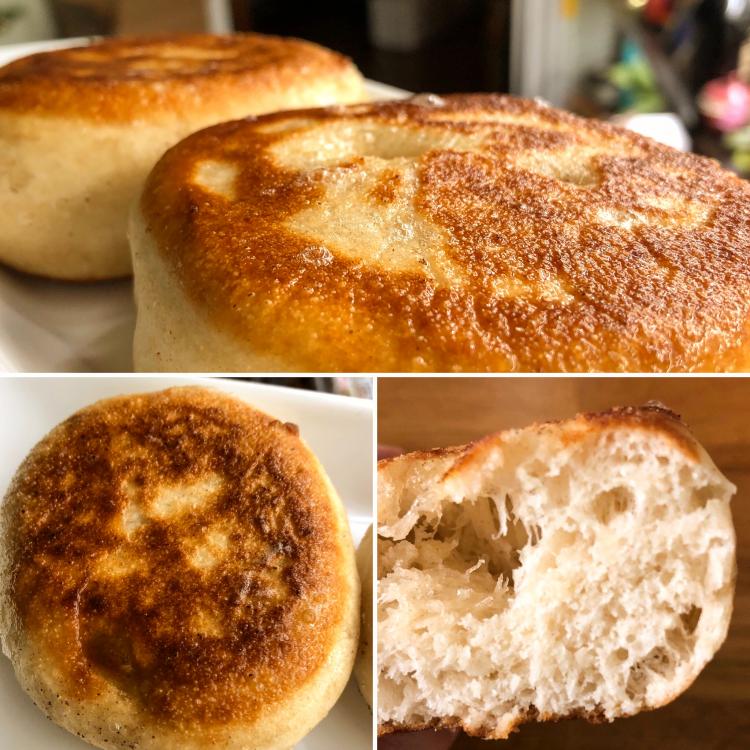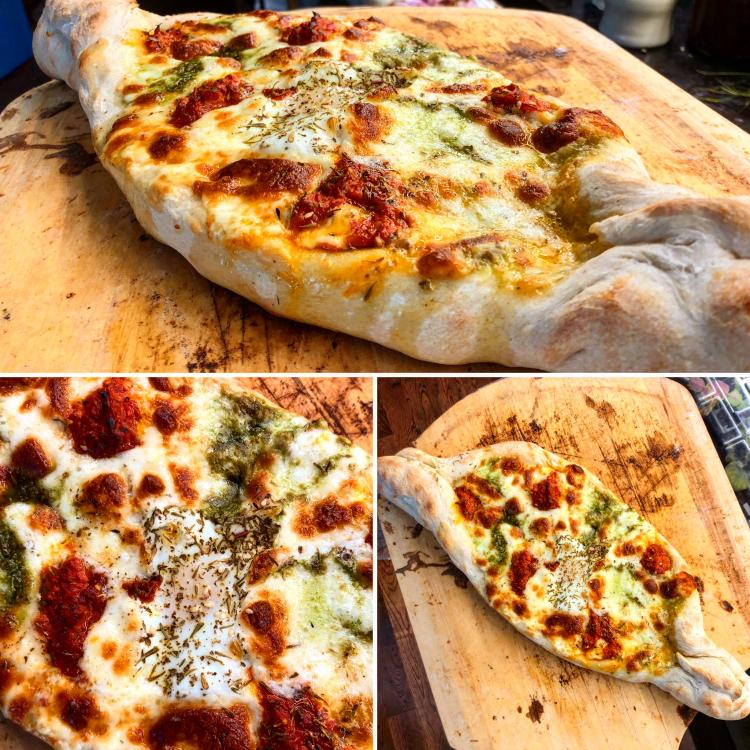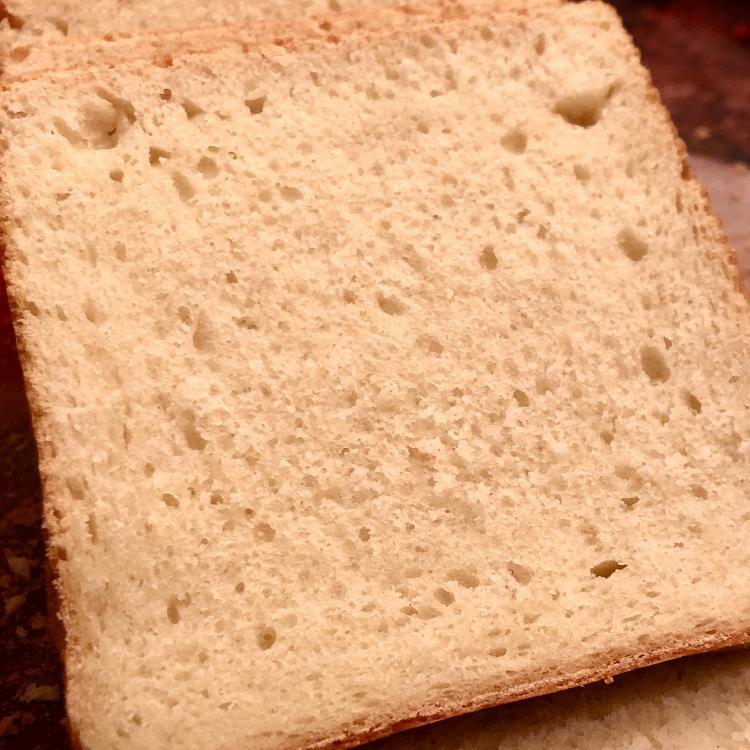
jimb0
participating member-
Posts
629 -
Joined
-
Last visited
Content Type
Profiles
Forums
Store
Help Articles
Everything posted by jimb0
-
you know toutons are traditionally fried in pork fat....
-
Your Daily Sweets: What Are You Making and Baking? (2017 – )
jimb0 replied to a topic in Pastry & Baking
i took a break shoveling today's ridiculo snowfall and while i was inside the neighbour came over with his snowblower and did all the rest of my driveway. i definitely felt some relief. i took over some cinnamon rolls and caramels as a thank you. he's like "you didn't have to do this!" well yeah. that's the point, friend! this is the first time i've incorporated a tangzhong, so it'll be interesting to see how/whether they stay soft over the next few days. -
i’m not sure how much you care these days but they have pretty reasonable peel and stick led lights for an easy fix to that sort of issue
-
@btbyrd is correct, but the difference is not at all obvious to new users, which is partially the point of doing it that way. and as we can see from this topic, people clearly make the mistake of not differentiating. imo you're sort of well actuallying the issue, and really the fault lies with chefsteps for implementing poor ux
-
i generally prefer induction for that reason, plus the fact that it doesn't make the kitchen smell, and it's easy for me since i'm in ontario. BUT. i've really been kind of eager to get one of those home biogas setups. they sell a low-pressure burner for use with the setup and suggest that you can get up to two hours of cooking time on it per day. https://www.homebiogas.com
-
speaking of limes, the key lime gave us a couple this year. the calamondin probably has a dozen or two in it. this time i think i might ferment them.
-
i have arguments with myself where i go back and forth on the merits of a deep fryer....
-
this is how we always made the (multi-named, depending on region) toad in the hole, of an egg in a piece of bread with the middle removed. my favourite is always the salty, greasy middle piece.
-
yeah; the page froze and managed to post the picture but lost all the text. it's been edited. these specifically were definitely toutons!
-
i had a whole post typed up, but alas, it's been lost. i searched the forums but didn't find a thread dedicated to fried breads, thus. yesterday, i fried up some toutons to go with a beet soup. toutons are the popular newfoundland version of fried bread, historically made with bits of dough left overnight and fried in the morning with salt pork fat. like in the south, they were/are often served with molasses, butter, and/or beans. on the rock you'll find any number of restaurants serving them, some of which have a whole touton menu with various toppings or spreads. a lot of restaurants deep fry them instead of pan fry them out of ease of cookery, which has become a point of contention among many newfoundlanders. i had a bowl of leftover dough in the fridge from making khachapuris a couple of days ago, so i portioned out a couple of balls, patted them flat, let them proof for twenty minutes or so, and then pan-fried them in a mix of rice bran oil and butter. fried breads have a long history all over, often but not always as a sustenance food for cold weather climes. the navajo are known for their version of frybread from the 1800s, but it's commonly believed that first nations groups of north america also had their own forms of bannock made with local ingredients before it was re-imported from scotland. anyway i'd like to investigate fried breads more; post your own favourites and experiments here.
-
i'm able to get my steel up to around 300C or so. i keep it on the top rack when i'm doing pizza, then just before the pizza goes in the oven i turn on the top broiler. between the two, i can get a small pizza done in 2-3 minutes, which i think is pretty respectable for a standard home oven.
-
does khachapuri belong in this thread fridge leftovers khachapuri (georgian cheese bread). leftover pesto, bottom of a jar of ajvar, some discount cheese curds i had in the freezer, an egg, some za’atar.
-
looking good. the peel is a bit of a surprise to me, does no dough ever get caught in the holes?
-
op mentioned it includes overnight shipping. i wish this sort of thing was reasonable to ship to canada!
-
but op's issue is fat, and there's really no way that they have anything approximating a traditional pie crust that is also low in fat. it might be a vegan fat (e.g., almond flour), but it's still fat. i bet it's delicious - almond flour is tasty - but i've never had anything from anyone made with almond flour that ate like a traditional pie crust. i expect it's more akin to a chewy cookie or graham cracker crust in texture (which is not necessarily a complaint, all those are delicious, but they aren't really pie crusts in the sense of them here, i think).
-
a lot of the big hippy brands of SF chocolate (like lily's) use inulin, poly-D, and/or dextrin for bulk and erythritol plus/or a super sweetener for the rest of it. they aren't as hard as a standard sucrose bar, but they're not terrible. i just hate inulin personally. their white chocolate, on the other hand, is awful. so much recrystallized erythritol that it actually affects the texture. i don't think it would require $500k to figure this out, and certainly not a whole department. a little scientific acumen and a few weekends would be enough for a small-time chocolatier to put out a reasonable product. i just think most big companies don't care to spend the resources because the roi mostly isn't there for them.
-
i am pretty sure one or two factories make these and then they get sold under a million different brand names on amazon. i have something similar with a different name and use them a lot (mostly for soap, sometimes for cooking). it's amazon, and they do easy returns, so i'd just get it and try it out, personally.
-
Your Daily Sweets: What Are You Making and Baking? (2017 – )
jimb0 replied to a topic in Pastry & Baking
i agree fabulous. although i said well, and then another f word out loud before i said fabulous. the specific word will be left as an exercise to the reader to decipher. i do have a wonderful smelling pomelo that's getting soft and should do something with.... -
bingo. it's by weight, it's the classic ratio, and it works beautifully. you can't make a zero fat pie crust, and it won't look the same either. that's just called bread. if you want to bake stew inside of bread, you can, and it works very well! i make these things i call "stuffs" (because they're stuffed, get it) and often use leftover stews that i thicken up; it's basically a stuffed roll or bun with meat or cheese or vegetables, or all three. but it's bread, not a pie crust. pie crusts have fat, they need fat, it's a fundamental aspect of their nature. you can probably reduce it slightly, but you'll pay for it with a tougher texture. i recommend just making a normal pie crust and not eating a lot of it.
-
i'm mildly horrified that your biscuits leak so much butter, but that's neither here nor there. drop biscuits would definitely be the easiest ones to reduce fat in, imo, so a good choice. what's your original recipe for pie dough, out of curiosity? i always stick to the standard 3:2:1 flour:butter:water, with a pinch of salt. personally without using some high-tech food replacements, i don't think you can really lower the amount of butter in a pie dough and still have something that tastes / eats like pie dough. it can still be good, no doubt! but it's not going to be like a classic pie crust. so one options is to just cut the butter and be okay with a breadier pie crust. i think you have two good options, though. one is to use less dough. that's not quite what you want, i know, but you can instead use the dough to really good effect. like, instead of doing two big crusts for a pot pie, make your filling as a stew, which is 90% of the pot pie experience. then serve it with individual and separately baked rounds of pie crust, allowing you to enjoy the buttery, rich pie crust either on its own or with the stew. the other option would be to consider something like a phyllo dough, which won't be rich and buttery, but might get you the crunch you're looking for in a good pie crust.
-
in addition to erythritol a number of the low-carb chocolate makers will use one of the long-chain sugar-starches like polydextrose or inulin, which aren't sweet, but are possessed of many of the properties of glucose and fructose, respectively, and then a supersweetener like sucralose, monkfruit, or splenda for the actual sweetening power. you can also combine these with xylose or erythritol / other sugar alcohols (but definitely avoid maltitol).
-
-
please excuse the mess, as i am lazy shelf systems were all super expensive so we just bought some 2x10 dimensional lumber, routed out grooves in the bottom, and stained and urethaned it. planning on doing some more cleaning out of the cupboards, and then these will be limited to mostly plants, tea and coffee storage (i guess they're plants), booze, maybe some other items. less cluttered, anyway.
-
i will in an hour! just came out of the oven.


